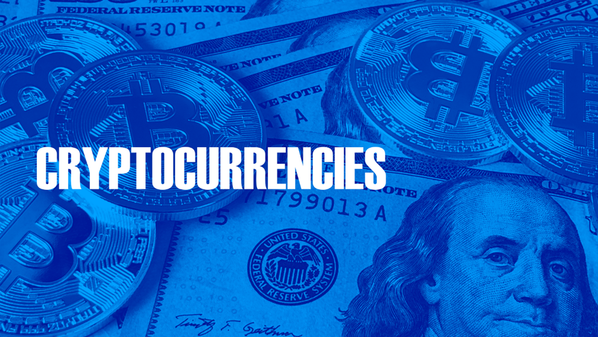
This week, the Dow Jones fell 0.1%, the S&P 500 gained 0.8% and the Nasdaq gained 1.1%. U.S. stocks continue to rise for a second day on Friday as uncertainty over economic data and the Russian-Ukrainian war led traders to downgrade bets on the Federal Reserve to raise interest rates sharply next month.
U.S. inflation-adjusted consumer spending rose more than expected in January. Consumer confidence improved in late February from the beginning of the month but remained near a 10-year low as inflation concerns remained high.
Investment strategist Sam Stovall said we are now experiencing an upward pullback that has resulted in a lot of short covering. But I don't think the period of big volatility is over. At least in the short term, Wall Street believes it's time to return to stocks rather than holding cash or Treasuries. The Fed's semi-annual policy report reiterated that the time to raise interest rates is “very soon”. Markets still expect about six Fed rate hikes of 25 basis points each, but investors' bets on other central bank rate hike cycles have slipped in recent days.
Volatility may remain elevated for the next week ahead, with events in Ukraine shaping the market, but the focus will eventually shift back to the Fed and the outlook for interest rates.

Block (SQ.US) reported strong fourth-quarter earnings due to its outstanding bitcoin sales. Revenue in the last quarter was $4.08 billion, slightly higher than analysts' estimates of $4.01 billion. Adjusted earnings per share were reported as 0.30 per dollar, 0.01 higher than the market expectation. The company estimates that it's Cash App gross margin growth will improve in the second half of the year compared to the first half, and said Cash App and Square will gradually increase gross margins each quarter in the future.
Dell (DELL.US) reported earnings of $1.72 per share last quarter, missing analysts estimates of $1.95, and said supply chain bottlenecks will lead to an increase in the backlog of personal computer (PC) orders this quarter. Shares posted a profit of $1.25, missing analysts' forecast of $1.52, and both earnings performance and outlook for the quarter were poor.
Cryptocurrency exchange Coinbase (COIN.US) reported good fourth-quarter earnings, with revenue of $2.5 billion and earnings per share of $3.32 in the previous quarter, both far higher than analysts estimates of $1.94 billion and $1.85 billion. However, the firm said volatility in the cryptocurrency market will lead to a decline in trading volumes this quarter.

This week, most assets in the market were sold off due to the escalating geopolitical situation, and cryptocurrencies were no exception. However, as investors gradually digested the negative news, the market panic subsided and the cryptocurrency market began to pick up.
As of Friday's writing, most cryptocurrencies have started to recover, with Bitcoin climbing to around $39,000, Ethereum to $2,800, BNB to $362, Shiba up 13%, Dogecoin up 11%.
Famous trader Pentoshi said on social media that bitcoin prices are likely to regain the $40,000 mark in the short term, although he expressed “warning” about the overall macro environment.
David Lifchitz, chief investment officer of ExoAlpha, believes that compared with the market crash in May 2021, the cryptocurrency market now has a positive factor that is, the number of cryptocurrency investors forced to liquidate due to liquidation is decreasing, so this pullback in assets was more modest.
Market analyst Michaël van de Poppe tweeted that the panic selling was over. “The market has reacted in a sense that gold will start to pull back and risk assets like stocks, bitcoin, etc. are rising.”
At present, the total market value of cryptocurrencies is about 1.649 trillion US dollars, and Bitcoin accounts for 41.9%.

Gold extended losses on Friday as stocks rebounded, closing at $1,888.90 an ounce, as investors remained hesitant to assess the impact of the Russia-Ukraine war. U.S stocks extended their rally as mixed economic data and uncertainty over the conflict between Russia and Ukraine led traders to temper expectations that the Federal Reserve could raise interest rates sharply next month. Gold briefly touched its highest level since September 2020 on Thursday, but reversed gains and ended lower. Gold's rally reversed for a number of reasons.
Ole Hansen, a commodity strategist said the market was severely overbought, losing momentum before the $2,000 mark, investors worried that Russia needed to sell gold to support the ruble, and the impact of U.S. President Biden's sanctions did not impress the market. Hansen remains bullish on gold as inflation will remain high and central banks may struggle to slam on the brakes amid the risk of an economic slowdown.
Fu Xiao, head of the commodity strategy at BOC International, said that risk premiums and safe-haven demand will continue to support gold prices, but the upside is limited due to the possibility of the Federal Reserve raising interest rates in March this year.

On Friday (February 25), Brent oil fell 0.52% close at $98.57 a barrel. Russia's invasion of Ukraine on Thursday pushed two crude oil benchmarks above $100 a barrel for the first time since 2014. Oil prices retreated sharply from this week's highs as the U.S State Department said it would not sanction Russian crude because it would hurt U.S consumers. Bart Melek, commodity strategist said the U.S and its allies appear to want to inflict pain on Russia without hurting its ability to supply energy products to the world.
However, some buyers briefly suspended purchases of Russian Urals crude over concerns that a breakdown in Russias relations with the West could complicate deals with Moscow. Urals crude is currently $11.60 a barrel lower than Brent crude, the biggest drop in nearly 11 years.
There have been no cracks so far in the OPEC+ producer agreement, which includes Russia after Russia invades Ukraine, and the coalition is likely to stick to the original deal at next week's meeting even as crude prices top $100 a barrel, OPEC+ sources said. OPEC+, the Organization of the Petroleum Exporting Countries (OPEC) and its allies, will meet on March 2 to decide whether to raise oil production by 400,000 bpd in April.

The U.S dollar index was last down 0.56 per cent at 96.53, with the greenback strengthening for a third straight week despite Friday's pullback. Before Thursday's jump, the dollar had been weakening in recent weeks as rising tensions in Ukraine fueled expectations that the Federal Reserve may tighten policy less aggressively as it tries to tame inflation. Thursday's gains pushed the dollar to its highest level since June 30, 2020.
U.S economic data showed consumer spending rose more than expected in January despite mounting price pressures and annual inflation hitting levels not seen in 40 years. Inflation data is not so good, but at least the month-on-month inflation data is not higher, which should discourage some of the Fed's most hawkish members. Expectations for a rate hike of at least 50 basis points at the Fed's March meeting have fallen to 25% from around 34% a day earlier.
EUR/USD was up 0.71% at $1.1271 speculative short covering. Lagarde said the central bank will do everything in its power to maintain the stability of prices and the financial system in the eurozone. ECB policymakers said the situation in Ukraine could cause the ECB to slow the pace of withdrawing stimulus.
OneProSpecial Analyst
Buy or sell or copy trade crypto CFDs atwww.OneProglobal.com
The foregoing is a personal opinion only and does not represent any opinion ofOneProGlobal, nor is there any guarantee of reliability, accuracy or originality in the foregoing.
Forex and CFD trading may pose a risk to your invested capital.
Before making an investment decision, investors should consider their own circumstances to assess the risks of investment products. If necessary, consult a professional investment advisor.
www.oneproglobal.com
Leave a Reply